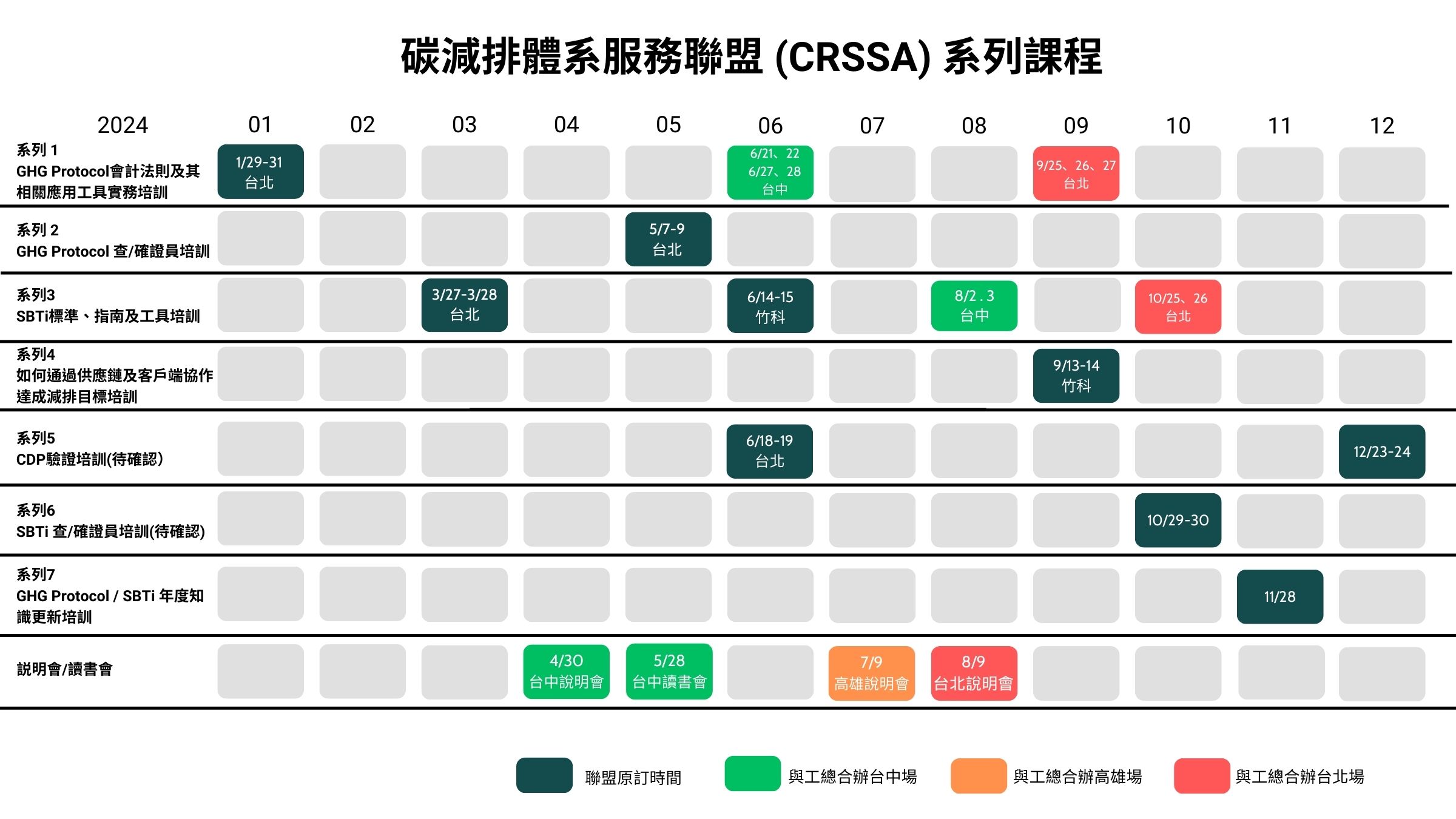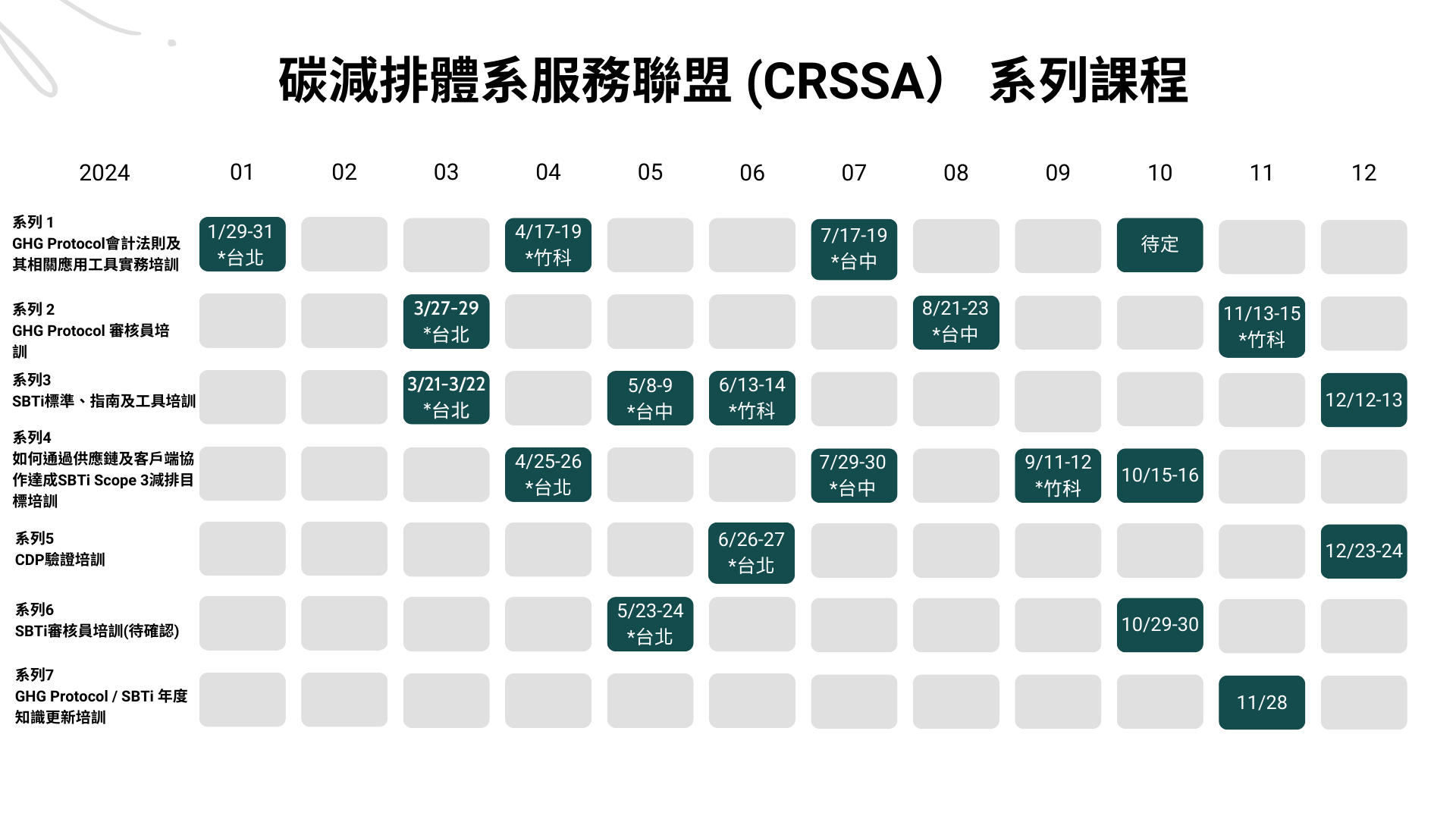


It is a high-intensity training course. This course includes three days of physical classes, written examination (24 hours), and after-class homework (6 hours). How to implement the GHG Protocol and comply with the basic requirements of third-party assurance will be explained in detail.
● Form an effective GHG Protocol implementation team
● In-depth analysis of GHG Protocol standards and different accounting methods
● Choose a calculation method suitable for the characteristics of the enterprise to calculate the enterprise’s emissions (including using accounting software such as EEIO)
● Focus on value chain data collection and emission accounting (solve the dilemma of companies implementing ISO14064-1 avoiding the value chain)
● Base year recalculation principles and implementation details
● Explanation of GHG report content
● Help students enter practical application scenarios through classroom explanations, best practice case analysis and after-class homework
● Analyze GHG data quality and prepare data quality improvement plans
● Determine key emission categories and key stakeholders in the value chain and assess emission reduction potential
● Meet the basic requirements for third-party assurance.


Intense training sessions. This course includes three days of physical classes, written examination (24 hours), and after-class homework (6 hours). It will be explained in detail how to implement GHG Protocol verification (verification and validation) according to ISO14064-3 and Global International Verification Co., Ltd. process.
● In-depth analysis of the characteristics of corporate GHG Protocol emission data and how to apply ISO14064-3 principles for verification.
● How to understand and meet expected user requirements.
● Understand and apply risk assessment (Risk assessment) and analytical testing (Analytical testing).
● Describe the GHGProtocol verification process of Global International Validation Co., Ltd. (focus on validation).
● Teach students to conduct verification through classroom explanations, case analyses, classroom exercises and after-class homework.


This course consists of two days of physical (or online) classes. Explain how to set short-term goals and long-term net zero goals in accordance with SBTi requirements.
● Considerations on whether to implement SBTi
● SBTi corporate manuals, standards and guidelines and other regulations
● How do group companies define the organizational boundaries for implementing SBTi?
● In-depth analysis and explanation of the application scenarios of different types of emission reduction targets, assisting enterprises to set the most appropriate emission reduction targets based on their characteristics
● Use the SBTi scientific target calculator to simulate emission reduction target scenarios
● SBTi emission reduction target review process inquiry actual case analysis
● Explain the weaknesses and uncertainties of SBTi’s current business model
● Description of the macro strategy for implementing SBTi
● Investment and benefits of implementing SBTi


This course is a two-day physical course. Explain how to achieve “collaboration” in the value chain through innovation and practice in communication and management to achieve SBTi Scope 3 emission reduction goals.
● Understand the importance of the supply chain and clients to Scope 3 data quality levels and achieving emission reduction targets
● Describe GHG Protocol/SBTi value chain (supply chain and client) greenhouse gas management and collaboration methods
● Supply chain and client greenhouse gas management best practice case descriptions
● Establish and implement supply chain and customer greenhouse gas management mechanisms


● Intensive training sessions. This course includes two days of physical classes and written examination (16 hours), and after-class homework (3 hours).
● Will explain in detail how to extend/apply the GHGPROTOCOL verification system for CDP verification.
● Understand the CDP system and requirements
● Explain the CDP verification process of Global International Verification Co., Ltd. (Focus on VALIDATION)
● Teach students to verify through classroom explanations, case analysis, classroom exercises and after-class homework


The duration and content of this course will be established after SBTi releases the MRV standard. It will include physical courses, written examinations, and after-class homework.
● The duration and content of this course will be established after SBTi releases the MRV standard. It will include physical courses, written examinations, and after-class homework.


One day physical (or online) course. DescriptionGHG Protocol/SBTi/Verification Reference
Updates to relevant documentation and sharing of best practices. Achieve knowledge sharing and satisfy auditors
Continuing education requirements.
One day physical (or online) course. DescriptionGHG Protocol/SBTi/Verification Reference
Updates to relevant documentation and sharing of best practices. Achieve knowledge sharing and satisfy auditors
Continuing education requirements.


It is a high-intensity training course. This course includes three days of physical classes, written examination (24 hours), and after-class homework (6 hours). How to implement the GHG Protocol and comply with the basic requirements of third-party assurance will be explained in detail.
● Form an effective GHG Protocol implementation team
● In-depth analysis of GHG Protocol standards and different accounting methods
● Choose a calculation method suitable for the characteristics of the enterprise to calculate the enterprise’s emissions (including using accounting software such as EEIO)
● Focus on value chain data collection and emission accounting (solve the dilemma of companies implementing ISO14064-1 avoiding the value chain)
● Base year recalculation principles and implementation details
● Explanation of GHG report content
● Help students enter practical application scenarios through classroom explanations, best practice case analysis and after-class homework
● Analyze GHG data quality and prepare data quality improvement plans
● Determine key emission categories and key stakeholders in the value chain and assess emission reduction potential
● Meet the basic requirements for third-party assurance.
